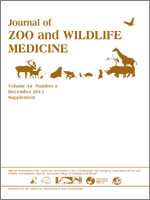In recent years, the Bureau of Land Management's (BLM) Wild Horse and Burro Management program costs have increased dramatically due to a rise in the number of animals removed from public lands coupled with significantly decreased adoption rates. To assist with development and implementation of effective, cost-containing management programs, a robust economic model to project the costs and optimize outcomes of various management scenarios was created. For example, preliminary demonstration model runs show that by gradually replacing “removal-only” programs with contraception-and-removal programs on one hypothetical Herd Management Area (HMA), the BLM could save about US$8 million over 12 years while maintaining an area target population of 874 horses. Because the BLM estimates that more than 38,000 wild horses roam on 179 HMAs in the United States, the use of this economic model could result in a cost-savings of tens of millions of dollars if applied broadly across all HMAs.
How to translate text using browser tools
1 December 2013
AN ECONOMIC MODEL DEMONSTRATING THE LONG-TERM COST BENEFITS OF INCORPORATING FERTILITY CONTROL INTO WILD HORSE (EQUUS CABALLUS) MANAGEMENT PROGRAMS ON PUBLIC LANDS IN THE UNITED STATES
Charles W. de Seve,
Stephanie L. Boyles Griffin
ACCESS THE FULL ARTICLE
Bureau of Land Management
economic model
Equus caballus
fertility control
porcine zona pellucida
wild horses





